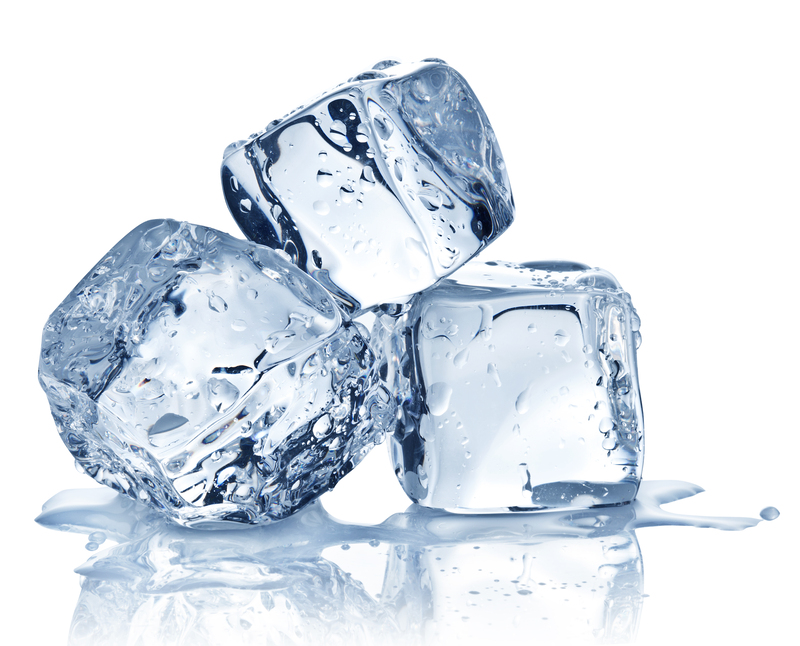Innovative Ways to Achieve a Mold-Free Bathroom
Posted on 07/10/2025
Innovative Ways to Achieve a Mold-Free Bathroom
Bathroom mold is an all-too-common nuisance that poses health risks and damages property. Many homeowners find themselves battling black spots on tiles, persistent musty odors, and unsightly mildew stains. However, the good news is that through a combination of modern technology, clever design, and proactive habits, you can safeguard your space. This comprehensive guide explores innovative strategies to achieve a mold-free bathroom, ensuring your sanctuary remains fresh, healthy, and visually appealing.
Understanding Why Bathrooms Are Prone to Mold
Before diving into advanced techniques, it's crucial to understand why bathrooms are prime habitats for mold. In essence, mold thrives in areas with high moisture, warmth, and poor ventilation--the bathroom provides all of these in abundance.
- High Humidity: Steamy showers, hot baths, and poor air circulation create moist environments.
- Organic Material: Soap scum, skin cells, and even grout provide food for mold growth.
- Poor Light: Bathrooms often receive little natural sunlight, which helps inhibit mold.
Recognizing these underlying causes enables more targeted and permanent solutions for preventing bathroom mold.

Cutting-Edge Upgrades for a Mold-Free Bathroom
If you're building or renovating, or simply want to upgrade, these innovative products and materials offer powerful ways to minimize the risk of mold in any bathroom.
1. Mold-Resistant Paints and Grouts
Traditional paints and grouts welcome mold, especially when constantly exposed to water. The latest generation of mold-resistant bathroom paints and epoxy-based grouts are formulated to repel moisture and inhibit fungal growth. Leading bathroom mold prevention products contain antimicrobial additives that discourage colonization on painted walls, ceilings, and tile joints.
- Easy to apply--just replace your standard paint and grout with specialized alternatives.
- Long-lasting protection even in high-moisture zones.
2. Anti-Microbial Bathroom Fixtures
Touchpoints such as sink handles, showerheads, and faucets can harbor mold spores. Today's innovative fixtures incorporate anti-microbial finishes or are made from copper alloys that naturally destroy mold, bacteria, and viruses.
- Self-cleaning showerheads reduce spore buildup.
- Hands-free faucets minimize surface contamination.
3. Smart Ventilation Systems
Effective ventilation is the cornerstone of a mold-free bathroom. Advanced systems now feature humidity sensors that automatically adjust airflow based on moisture levels. Connectivity via smart home apps allows for remote control and monitoring, ensuring you never forget to ventilate after a steamy shower.
- Motion-activated extractor fans boost air exchange only when needed.
- Integrated dehumidifiers maintain ideal ambient humidity (under 60%).
4. Infrared Heating Panels
Traditional radiators create warm, damp air that encourages mold. In contrast, infrared heating panels emit gentle, dry heat that prevents condensation inside your bathroom. They also require minimal maintenance and can be installed as stylish wall panels or mirrors for dual functionality.
5. UV-C Sterilization Lights
Ultraviolet-C (UV-C) light technology is revolutionizing indoor hygiene. Installed in exhaust systems or as independent lamps, UV-C sterilization devices kill mold spores and bacteria in the air and on surfaces, providing ongoing protection--especially useful in high-humidity climates.
6. Mold-Repelling Surfaces and Shower Screens
Modern shower screens, mirrors, and wall panels now feature nano-coatings that repel water and prevent soap scum adhesion. Choosing glass treated with hydrophobic layers, for example, means less condensation--and fewer places for mold to anchor itself.
Everyday Habits and Maintenance to Prevent Bathroom Mold Growth
Cutting-edge tech helps, but even the smartest bathroom can develop mold if neglected. Adopting these simple daily and weekly routines will keep your bathroom environment dry, clean, and fungus-free.
1. Squeegee After Every Use
Excess water left on tiles, screens, and tubs can fuel mold. Using a squeegee to remove water from hard surfaces each time you shower dramatically minimizes available moisture. This is one of the fastest and most inexpensive ways to achieve a mold-free bathroom.
2. Leave the Door and Windows Open
Allow air to circulate freely after a steamy shower or bath. If your bathroom lacks windows, prop the door open for at least 15-30 minutes to dissipate humidity. Ceiling or wall-mounted fans can further accelerate the drying process.
3. Launder Textiles Regularly
Bath mats, curtains, and towels quickly become breeding grounds if left damp. Wash textiles weekly, and ensure they dry fully before returning to their place. Synthetic fabrics are preferable over cotton because they dry faster and harbor fewer spores.
4. Fix Leaks Instantly
Leaky plumbing feeds hidden moisture into walls and floors, spurring fungus behind the scenes. Invest in leak-detecting smart sensors that send alerts to your phone at the first sign of moisture. Promptly addressing leaks not only prevents mold but also costly water damage.
5. Deep Clean at Least Monthly
Don't let gunk accumulate in grout lines, behind toilets, or under sinks. Use a non-toxic mold remover or a simple mix of white vinegar and baking soda to scrub hotspots. For stubborn stains, try hydrogen peroxide (always spot test first).
- Prioritize hidden spots like under shower seals and around window frames.
- Regularly run exhaust fans during and after cleaning to dry all surfaces.
6. Declutter Countertops and Shelves
Clutter blocks airflow and provides shelter for mold spores. Store toiletries in cabinets and leave surfaces clear for optimal air movement. If possible, install open shelves to promote circulation around stored items.
Design Innovations That Make All the Difference
If you're planning a remodel, these clever design solutions can future-proof your bathroom against mold:
1. Install a Curbless Shower
A seamless or curbless shower design eliminates edges where water typically collects, allowing floors to drain completely. Combine this layout with a gentle slope and powerful floor drain for maximum effect.
2. Choose Large Format Tiles
Large tiles mean fewer grout joints, which are notorious for harboring mold. Opt for porcelain or glass tiles, which are non-porous and easy to clean.
3. Elevated Vanities and Wall-Mounted Fixtures
Wall-mounted sinks, toilets, and cabinets aid cleaning and ensure that no water is trapped beneath fixtures. This modern look not only saves space but prevents moisture buildup where you can't easily see.
4. Add Built-in Niches and Drainage Channels
Recessed wall niches for shampoo and soap bottles prevent water from pooling on ledges. Integrated drainage channels in these areas help keep shelves bone-dry, further discouraging mold colonies.
Natural Mold Prevention Methods
While advanced products are effective, many homeowners prefer natural ways to maintain a mold-free bathroom. Here are some time-tested strategies:
- Tea Tree Oil: A few drops added to spray bottles of water creates a natural anti-fungal surface cleaner.
- Baking Soda: Sprinkle onto damp spots, then scrub away stains without harsh chemicals.
- Vinegar: Use undiluted on tiles, grout, and glass for a safe, deodorizing clean.
*Note: Natural remedies are best for regular upkeep and minor issues. Severe infestations will typically require professional intervention or stronger products.
Tech Tools for Mold-Free Bathroom Maintenance
Embrace the digital age for bathroom mold prevention. The latest smart devices and apps make mold management nearly effortless:
- Smart Thermostats & Humidity Sensors: Receive alerts if humidity climbs above a preset threshold.
- Leak Detectors: Immediate notifications help you catch leaks before they escalate into mold problems.
- Automated Air Fresheners with Anti-Microbial Ingredients: Maintain healthy air quality while adding pleasant scents.
The Hidden Health Risks of Bathroom Mold
It's essential to take bathroom mold prevention seriously. Even small mold colonies release spores that contribute to respiratory issues, allergic reactions, and worsen asthma. Prolonged exposure may result in more severe conditions, including sinus infections and skin irritations--especially in children, elderly, or immunocompromised individuals.
Mold can also degrade building materials, leading to costly repairs and unsightly deterioration. Proactive measures are an investment in both your health and your home's value.

When to Call a Professional
If you notice persistent, strong musty odors, or if visible mold covers an area larger than 10 square feet, it's time to seek expert help. Professional mold remediation services use industrial-strength equipment and have the expertise to thoroughly eradicate mold, prevent recurrences, and repair any underlying structural issues.
Conclusion: Your Path to a Modern, Mold-Free Bathroom
Achieving and maintaining a mold-free bathroom is easier than ever thanks to breakthroughs in design, materials, and smart technology. By combining innovative products, smart daily practices, and natural remedies, you can create a healthy, safe, and welcoming bathroom oasis for your family.
- Choose mold-resistant materials during renovations.
- Take advantage of smart tech for early detection and intervention.
- Adopt simple habits that keep moisture--and mold--at bay.
Ready to transform your bathroom into a mold-free zone? Start with one innovative upgrade at a time, and watch your space become cleaner, fresher, and more resilient than ever before.




